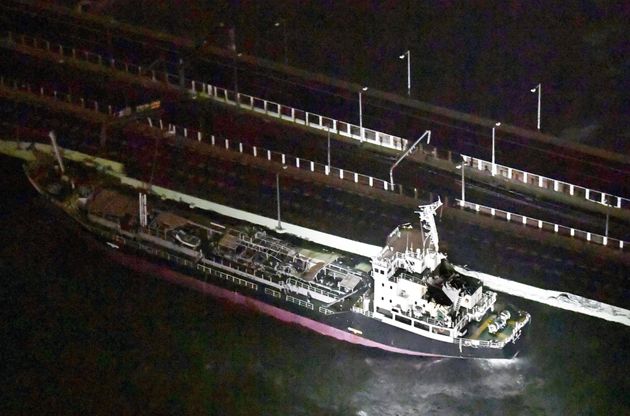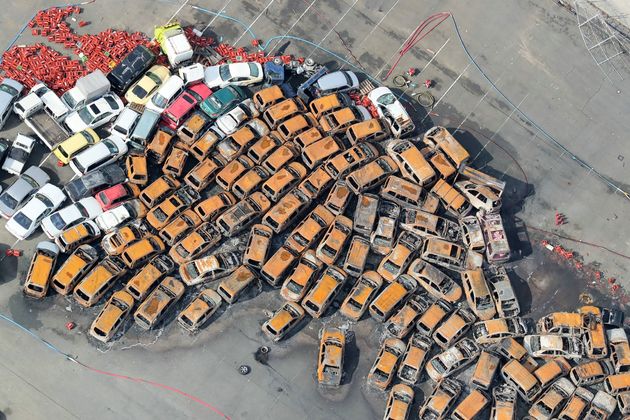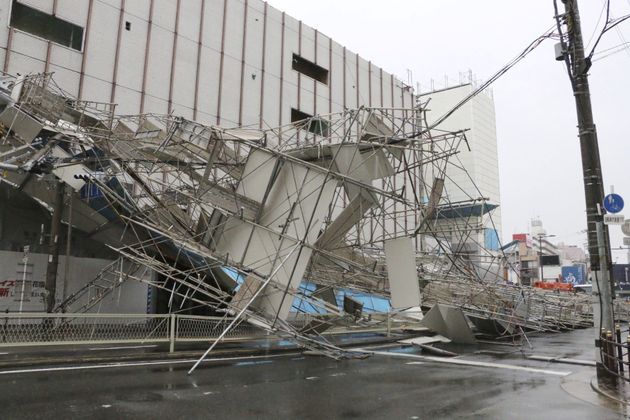Typhoon Jebi has left more than 3,000 passengers stranded at a Japan airport, after sweeping across the country’s main island.
Kansai International Airport is located on a man-made island and the typhoon, which is is believed to be the worst to hit Japan since 1993, caused one runway and multiple buildings to flood.
A tanker that was mooring slammed into the side of a bridge connecting the airport to the mainland, damaging it and leaving people stranded overnight, transport ministry official Mitsuo Nakao said.

Aerial footage shown by Japanese broadcaster NHK showed a boat and a caravan of buses transporting those stranded across the damaged structure. The airport remains closed.
Passengers said they had to spend the night in the dark, with one claiming the terminal was also hot due to a power outage.
Hideko Senoo, 51, told Kyodo News: “We could not use vending machines or access to wireless local network to get information, and we didn’t even know about this boat service.”

Another passenger, Miki Yamada, said she spent the night at an airport cafeteria, adding: “It was a rather scary night, as we were so isolated.”
The airport was not the only area affected and the typhoon peeled roofs off buildings, toppled power poles and damaged businesses as it crossed Japan’s main island on Tuesday.

Japanese media tallied at least nine deaths, and the Fire and Disaster Management Agency said more than 200 people were injured.
Jebi has now been downgraded to a tropical storm and is heading north of Japan.
Numerous countries have experienced extreme weather this summer and in the US, Storm Gordon just hit the Gulf Coast.
Arriving on land overnight, the storm brought wind speeds of 70 miles per hour and a state of emergency has been declared in Louisiana and Mississippi.
On Tuesday night, 27,000 people in coastal Alabama, around the Florida Panhandle and in southeastern Mississippi were left without power.